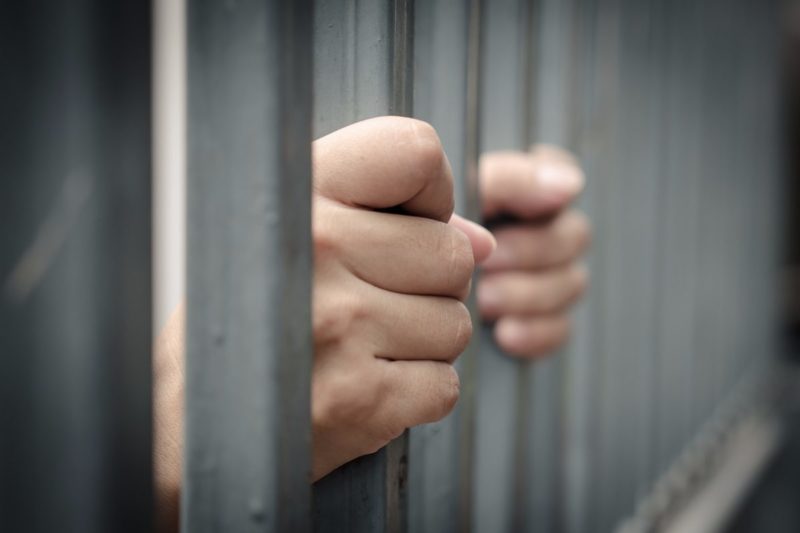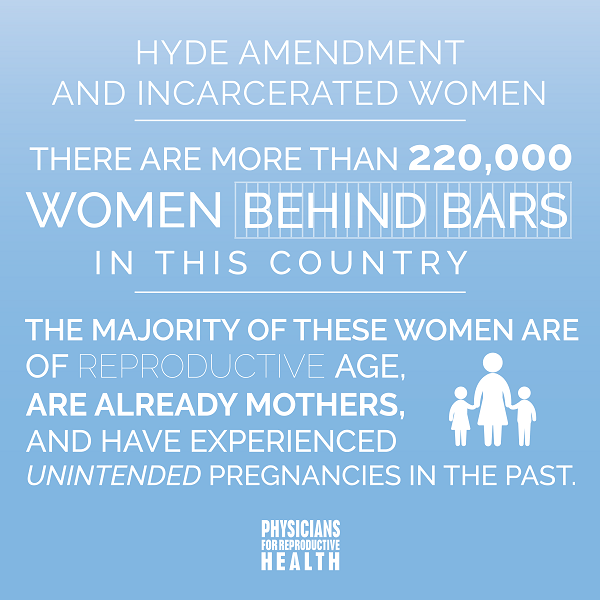Behind More Than Just Bars: Incarcerated Women and the Hyde Amendment
Women should not be forced to continue an unwanted pregnancy no matter where they live, their involvement in the criminal justice system, or how they receive coverage for their care.

This is the final part of a five-part series, published in partnership with Physicians for Reproductive Health, exploring how the Hyde Amendment negatively affects different populations in the United States.
Shortage of abortion providers and clinics, social stigma, logistical barriers, gestational age limits, policies restricting access, and financial constraints. These are only some of the many structural forces, which prevent, delay, or deny women from receiving abortion care for unintended or abnormal pregnancies.
There’s an additional barrier to accessing abortion that rarely receives attention even though it affects one of the most vulnerable groups of women in the United States: incarceration.
On any given day, there are more than 220,000 women behind bars in this country; the majority of these women are of reproductive age, are already mothers, and have experienced unintended pregnancies in the past.
Many of these women, who are largely arrested for nonviolent crimes tied to poverty, mental illness, addiction, or histories of abuse, enter jail or prison pregnant.
Frequently, the first time they learn about their pregnancy is when they become incarcerated.
Just as with nonincarcerated women, some of these women want to continue their pregnancies and some wish to terminate them.
Those who need an abortion face all of the usual barriers to access that women across the country encounter. But, depending on the prison’s or jail’s rules, they also may be up against a dizzying array of other constraints.
They may need special permission or a court order to obtain an abortion, or not be permitted at all because their prison or jail deems it an “elective” service. Some lack the knowledge that they have a right to an abortion because they assume all of their rights have been stripped due to their incarceration.
If they choose to get an abortion, they will have to rely on prison or jail staff to make the arrangements, which puts them in an even more vulnerable predicament. Some prisons’ locations in rural areas are far from abortion clinics, which creates a significant challenge if their abortion is a multi-day process, either because of waiting periods or a more advanced gestational age. If they are fortunate enough to get an appointment, their health care might be interrupted by a court appearance or transfer to another site, or they might not be able to gather the funds needed to pay for the abortion, as well as costs related to transportation to the abortion provider (such as overhead like gas, overtime for accompanying guards, or other related expenses). It can be an arduous task to gather all that is needed financially when there is limited access to expensive phone calls, few options for earning additional income, and when they might not have that much money or resources to begin with.
The funding complexities of prison health care do not help in these cases.
When a person enters prison, any public funding for health care and private insurance they might have had becomes suspended, and their health care then becomes the responsibility of the institution. In the case that the institution allows for abortion care, the appointment would happen off-site and the individual state prisons and county jails can choose whether or not they want to cover the cost of that care.

The Federal Bureau of Prisons (BOP) is not permitted to cover the cost of abortion, except in extremely limited circumstances (life endangerment, rape, or incest) due to a Hyde-like amendment that is a stipulation of BOP’s funding.
This leaves women in federal prisons who need an abortion to come up with the funds themselves — even if they might have had coverage for this care outside of prison.
You can now understand what I mean by a dizzying array.
When analyzing the reasoning behind all of these constraints, it’s surprising to learn that courts have been crystal clear in acknowledging that incarcerated women retain their constitutional right to abortion while they are in custody. In fact, prisons and jails are constitutionally mandated to provide health care to incarcerated people, and at least one appellate court has made it perfectly clear that abortion constitutes “a serious medical need” that prisons and jails cannot refuse.
Despite this constitutional mandate, media accounts and lawsuits show that what actually happens is that many incarcerated women are unable to obtain abortions when they request them.
We don’t know how many exactly, as it’s incredibly difficult to study the issue of incarcerated women’s access to abortion due to the lack of data.
While we know that over a ten-month span in 2010, 1,161 women in 47 state prison systems and 119 in BOP custody gave birth, we have no idea how many incarcerated women have abortions, let alone how many request them and cannot access them.
The fact that we do not know is a reflection of how little we pay attention to these highly vulnerable women, and how easily they are forgotten.
What happens to women behind bars, where there is little oversight and much discretion, tells us much about how we as a society value these women and their abilities to have healthy pregnancies or to end unwanted pregnancies.
Federal funding bans for abortion care for prisoners and laws suspending state and federal Medicaid coverage for all incarcerated persons limit their access to the care they need and deserve.
Overturning all such federal funding bans, including the Hyde Amendment, would benefit incarcerated women and make it easier for them to access abortion care.
Women should not be forced to continue an unwanted pregnancy no matter where they live, their involvement in the criminal justice system, or how they receive coverage for their care.
